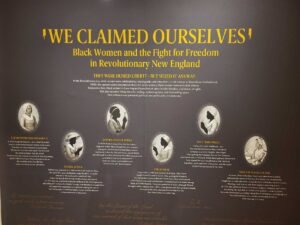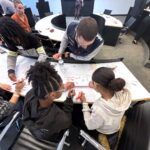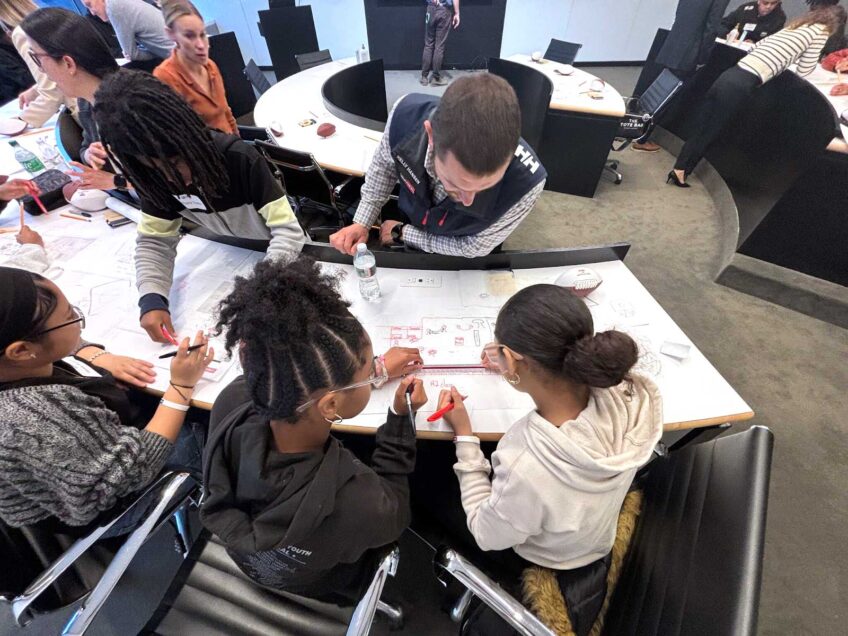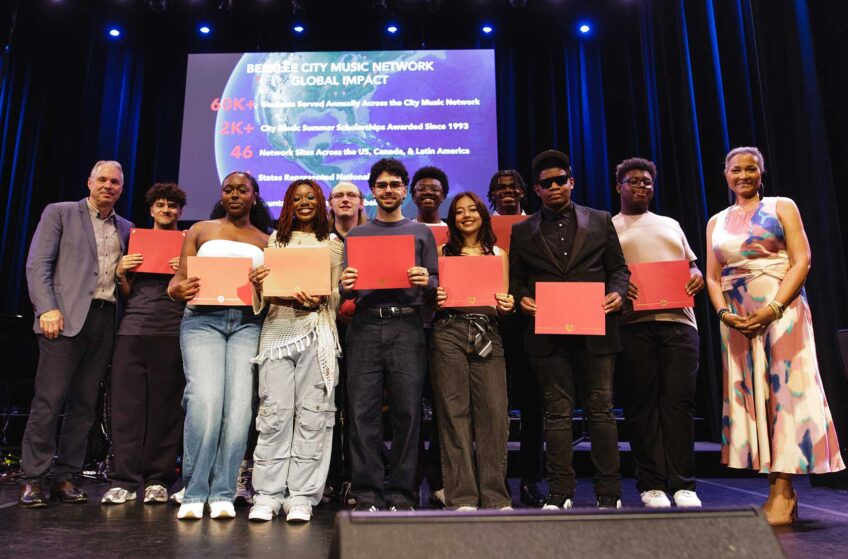The people and perspectives behind the founding of America
New MAAH exhibition centers Black history of Revolutionary War era
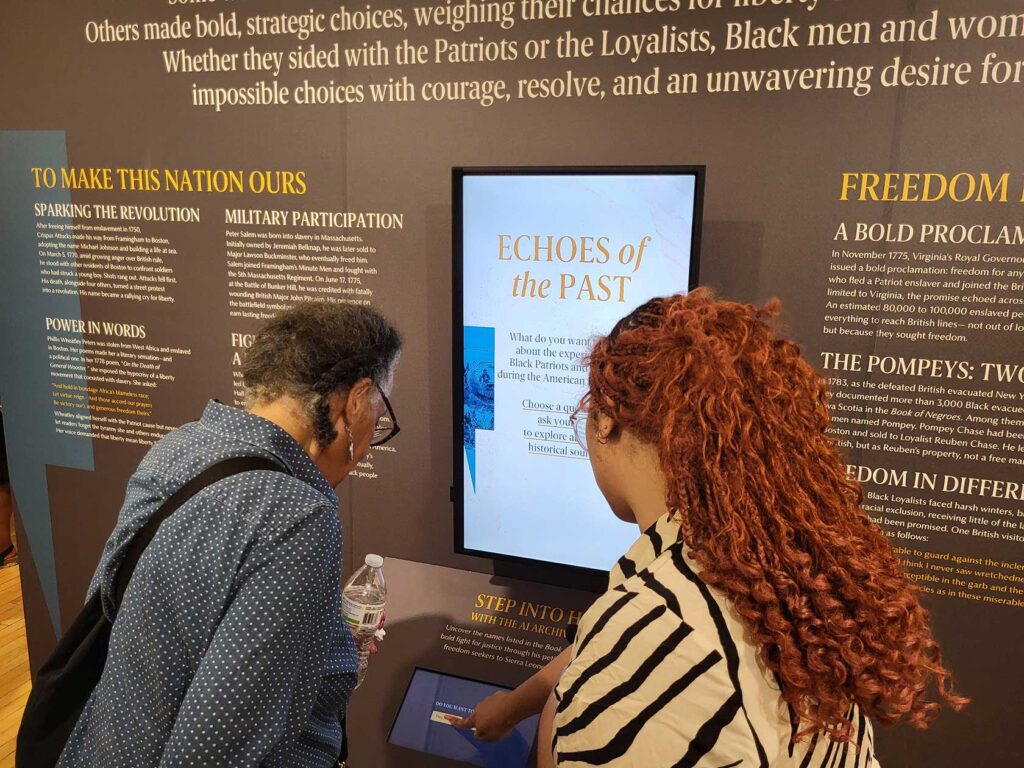
Visitors gathered at the Museum of African American History (MAAH) in Boston last Monday to see the unveiling of their newest exhibit titled “Black Voices of the Revolution.” It reexamines the diverse stories of African Americans during the Revolutionary War era to challenge traditional narratives by highlighting the individuals who have often been left out of mainstream historical accounts.
Black Voices of the Revolution explores the American Revolutionary period by centering Black and female perspectives. The exhibit is organized into six sections, including “Freedom for Whom?” and “Mapping Black Revolutionary Boston,” while featuring notable historical figures like Crispus Attucks, Phillis Wheatley Peters and Prince Hall, among others. Created through a partnership with TimeLooper, it incorporates interactive digital technology powered with AI that uses the museum’s collection of primary sources to generate answers to visitors’ questions about the people and history. The exhibit also displays some archeological artifacts found from their Nantucket location, accompanied with 3D printed model replicas that guests can physically interact with.
Dr. Noelle Trent, president and CEO of MAAH, explained how this exhibit is a new style for the museum to show people a different perspective on the history of the American Revolution and the ideas people traditionally don’t know about.
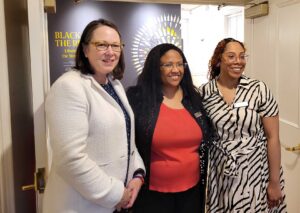
From left: Kate Fox, executive director of the Massachusetts Office of Travel & Tourism; Dr. Noelle Trent, president of MAAH; and chief curator Angela Tate unveil the new exhibit together. PHOTO: ZHI ZHU
“It allows us to show people what the Black community was thinking because we’re not a monolith and we’ve never been a monolith,” she said. “There are so many different powerful stories, especially the stories of women. Black women’s voices have historically been minimized in the public narrative, so we have worked really hard to present some new ideas.”
By shifting the focus of the American Revolution through the Black lens, the exhibition adds a crucial narrative that redefines the understanding of key moments from the period, putting a spotlight on stories from individuals often overlooked that shaped the country’s founding.
The creation of Black Voices of the Revolution was more challenging than some of the museum’s previous exhibits. Angela Tate, chief curator and director of collection for MAAH, described how the Black community during the period didn’t leave an extensive amount of personal written records. Much of their presence is mainly seen in historical archives from petitions documenting their fight for freedom, confessions and newspapers.
“Using these digitally immersive technologies, we get to bring these documents to life that visitors can engage with on their own terms and think about, what it means for us to have to do this excavation of the archives to tell these stories,” said Tate.
Visitors described the exhibit as a powerful way to connect with history by sharing and engaging with the diverse experiences that the Black community faced at the time as well as similar experiences faced today.
“I think people aren’t able to accept what they can’t understand, and art helps bridge that gap by making things accessible and easier to understand,” said Nyla Cross, a Harvard Du Bois intern curating an exhibit at the Museum of Fine Arts. “Exhibits like this and art take really traditional, intense, and complex topics and simplify them, putting them in an avenue that’s easier for people to understand, easier for them to empathize with and more engaging.”
Trevon Henderson, also a Harvard Du Bois intern, described that it is an immersive space for people to engage and participate in. “Having a space like this to be able to teach is definitely important because it doesn’t allow anyone to be stagnant. You get to walk around, and you get to interact, that’s significant for anybody seeking to learn. Neil deGrasse Tyson always says, ‘You want your work to be meaningful, you want the space for the viewer to be meaningful, and you want them to pose questions and ask questions about things.’”
As Tom O’Reilly, a member of the museum, explained, the importance of art was a way to help people understand different voices. “In many ways we have a shared history, the same dates, the same times, but different experiences. A big part for me is, I think the solution is in the other person’s space. Whatever the problem is, the solution’s in the other person’s place. The more you understand where the other person’s coming from, the more we’re able to figure out what the solution is to the problems we face together.”
The exhibit was funded by a grant from MA250 administered by the Massachusetts Office of Travel & Tourism. This funding was crucial for MAAH to be able to create this exhibit. “We’re very grateful to the state of Massachusetts for offering this funding opportunity because, without it, we wouldn’t have this exhibition at all,” said Tate.
Especially after the museum lost its IMLS grant funding due to federal cuts, it has been increasingly more difficult for them to not only create new exhibits, but have educational events to go along with it as well.
“Not having that [grant] meant that we had to rethink how we were going to do the educational program, particularly around this exhibition,” said Trent. “The programming is now delayed, and with the injunction, we’re able to rethink some things. But we’re hoping that people see this and they want to support this effort, and that we can encourage school groups to visit and engage with the digital technology as well.”
Places like the Museum of African American History are essential for educating people about the experiences and contributions of African Americans during the founding of the United States. “I think the work around is leaning on community partners, donors to the museum, and other institutions with similar missions who want to partner with us. At this point in time, I’m really leaning on the community,” Tate said.
Without sustained funding, continuing to uncover the history and importance of these stories becomes harder to preserve. Federal funding cuts to museums are catastrophic, particularly for ones like MAAH that aim to teach and expand the understanding of America’s full history.
“For federal funding to be cut for spaces like these, it means that there is definitely a revolt on learning and teaching. Thankfully we’re able to still have spaces like these and people who won’t just stand for injustice,” said Henderson.
With the Trump administration’s increasing pushback on cultural institutions, it creates a dangerous standard on how history can be portrayed and discussed in the country.
“It’s tragic that we have a governmental moment where the ambition is to reduce us, to make everything smaller and one voice, that cannot be the story of a great nation. A great nation has never been only one voice or one story, and it cannot be. What makes the greatness of America is the elaborate, composite make up of it,” said Edmund Barry Gaither, director and curator of the Museum of the National Center of Afro-American Artists.
“All of the people who have brought pieces of themselves, their legacies and heritages from every spot in the globe, have woven them into a magnificent tapestry. And now we have someone in charge of the tapestry who wants to cut it up and rip out all of the threads that are not his own.”
Like the pieces that African Americans contributed to the founding of the United States during the American Revolution, the diverse stories and backgrounds different people bring are essential to understanding the shared history all of us have.
“Every institution like this one has its purpose of making people larger and more fully engaged with what it means to be human. What it means to be human, is to be open to a larger world,” Gaither said.
For MAAH, they continue to strive to protect the history which shaped the United States, a country that was built upon by those who were denied freedom but shaped the very foundation of this nation.
“I hope people realize that African Americans have been here in this country, that they’ve made significant contributions. We hope to round out some stories that people think they know,” said Trent.

